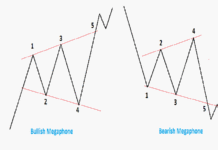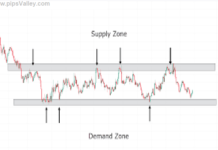
Gold has always held a unique allure in the world of finance and investing. Often seen as a symbol of wealth and security, it has consistently drawn the attention of traders, investors, and economists alike. In the tumultuous landscape of financial markets, gold stands as a testament to its enduring value and resilience. Through decades of xauusd historical data analysis, it becomes evident that gold, as represented by the XAUUSD trading pair (gold against the US dollar), has exhibited remarkable long-term resilience.
A Precious Metal with a Timeless Appeal
Gold’s status as a safe-haven asset is well-established. When economic uncertainties loom large, and traditional currencies falter, investors flock to gold as a store of value. The historical data for XAUUSD has consistently demonstrated this trend. During periods of global financial crises, geopolitical tensions, or economic recessions, gold has often experienced significant price rallies.
For example, the financial crisis of 2008 saw a surge in gold prices, with XAUUSD reaching all-time highs. Similarly, the COVID-19 pandemic in 2020 triggered a renewed interest in gold as investors sought refuge from the uncertainty. These events, among others, highlight gold’s role as a resilient asset capable of weathering storms.
The Power of Long-Term Trends
One of the most striking aspects of XAUUSD historical data analysis is the presence of long-term trends. Over decades, gold has displayed enduring patterns of growth punctuated by periodic corrections. These trends are often driven by a complex interplay of factors, including inflation, interest rates, central bank policies, and geopolitical events.
Understanding these trends is crucial for investors looking to capitalize on gold’s resilience. Long-term investors who have held gold in their portfolios have often benefited from its ability to preserve wealth over time.
The Dollar-Gold Relationship
The relationship between the US dollar and gold is a central theme in XAUUSD historical analysis. Traditionally, gold and the US dollar have an inverse correlation. When the dollar weakens, gold tends to strengthen, and vice versa. This relationship has significant implications for traders and investors.
Central bank policies and changes in interest rates can influence the dollar’s strength, which, in turn, impacts gold prices. Analyzing historical data for XAUUSD helps market participants anticipate potential shifts in this relationship and adjust their strategies accordingly.
Diversification and Risk Management
XAUUSD historical analysis also underscores the importance of diversification and risk management. While gold has demonstrated long-term resilience, it is not immune to short-term fluctuations and market volatility. Incorporating gold into a diversified investment portfolio can help mitigate risk and enhance overall stability.
Moreover, traders who engage in XAUUSD trading can employ risk management techniques, such as setting stop-loss orders and using technical indicators, to navigate the market’s ups and downs.
Conclusion
Decades of XAUUSD historical data analysis reveal a compelling story of gold’s long-term resilience in the face of economic, geopolitical, and financial challenges. As a timeless safe-haven asset, gold continues to hold its appeal for investors seeking wealth preservation and portfolio diversification.
It is important to remember that historical performance is not indicative of future results. While gold’s resilience is well-documented, the dynamics of financial markets can evolve over time. Therefore, prudent investors and traders should combine historical analysis with ongoing research and a thorough understanding of current market conditions to make informed decisions in the world of XAUUSD trading and gold investing.
Related Post:
Gold Prices Surge as XAUUSD Trading Hits All-Time Highs




























